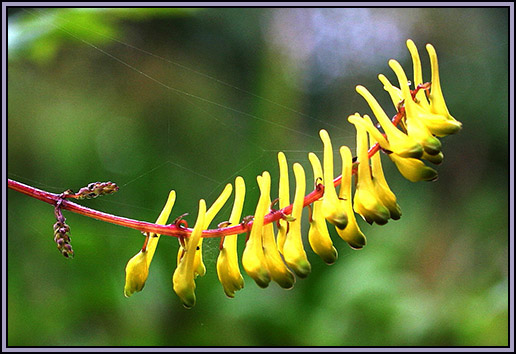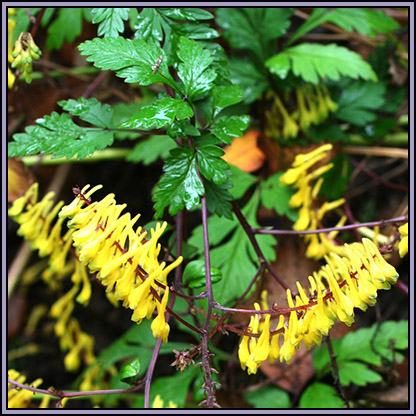|
|
|
 |
|
This lovely yellow Corydalis was planted out some
time during 2007/08, but the seed had been obtained as
part of a share in Chris Chadwell's 2003 expedition to
the North-West Himalaya. My
plant was grown from the only seed which germinated
from that particular packet. Inevitably, I lost track
of the label not long after planting, and thereafter I
was at a complete loss to give the plant a more
accurate name. It remained 'that lovely yellow
Corydalis' for a considerable time. I searched in vain
for a more precise identification only to discover
that there are more than 300 species of Corydalis to
be found in and around the Himalaya. It turns out that
this part of the world is something of a hotspot for
the genus which is probably still actively evolving -
and Google wasn't very helpful either.
|
|
|
|

|
But then much more recently I discovered a copy
of Chadwell's original documentation from the 2003
trip. The collection numbers included
'CC4687 Corydalis chaerophylla', and, better
still, I had scrawled next to the number '...
only one plant germinated from this batch ... very
strong growth ...' Success! - but doubts began to
creep in as I read further.
|
|
The accompanying brief field notes read '...
Corydalis sp. ... forests ... 33OO m.' Not
that specific after all. In the very same
documentation Chadwell himself admits that
accurately naming a species in vast, complex regions
such as the Himalaya can be very tricky. So much
variability within certain genera can fox and
frustrate any budding taxonomist. Chadwell
warns '... we would all like plant
identification to be quick and easy, with all plants
fitting into simple pigeonholes, but it does not
work like that.' Food for thought - and
doubt.. |
|
|
|
| Anyway, weighing up all the evidence, I've
decided to go with 'Corydalis chaerophylla CC4687' -
for the moment at least. My final lingering doubt
rests with the unwillingness of my plant to produce
any seed whatsoever, unlike so many of its seedy
relatives - so maybe there's at least a degree of
hybridity ? But not to worry. As I sit writing on a
dull, damp November day my yellow Corydalis remains
in full flower and is busily romping all over the
competition. It has turned out to be an
ironclad perennial and looks healthier than ever. It
even possesses a delicate perfume (reminiscent
of a late flowering Actea). But I still wish it
would produce a modicum of seed. Perhaps next
year ? |
|
|
|
|
|
